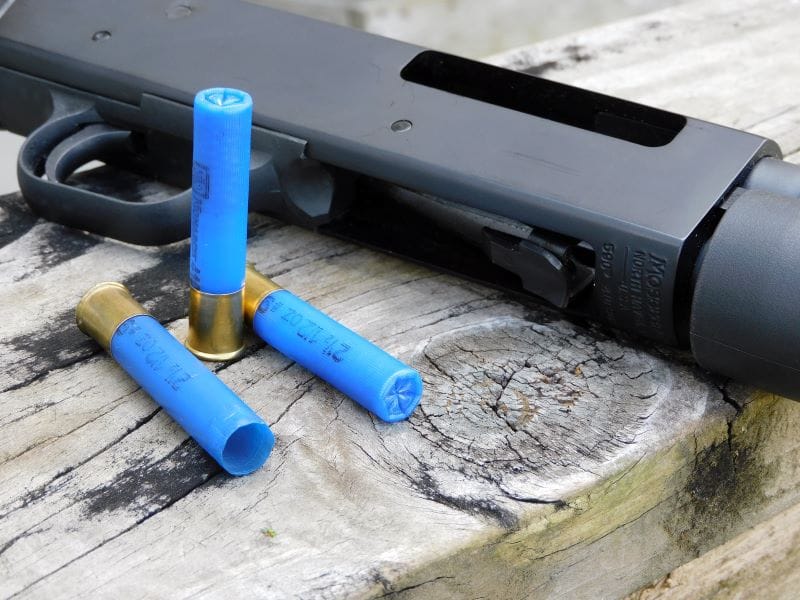The .410 shotgun is about as light as you can get for a shotgun. The shells are small and you will not get as big of a payload as a larger 12 or 20-gauge. In previous installments of our .410 series, we saw that some loads can be very effective. We examined the Hornady Triple Defense and the Federal 410 #4 buckshot loads. These two loads were developed for .410/45 Colt handguns, but we saw they could be even more effective out of the longer barrel of a shotgun. The Hornady Triple Defense, in particular, behaves like a pre-fragmenting 44 Magnum load and hits with authority. Coming off the heels of that test, I wanted to test the effectiveness of something on the other end of the power spectrum: .410 No. 9 birdshot.

An Intro to Small Birdshot
Birdshot is measured by number. The larger the number, the smaller the size of the individual pellet. No. 9 is the smallest shot size that is commonly available across all gauges. As the name suggests, birdshot is primarily intended for shooting birds and other small game. Each pellet is very small and does not carry much weight needed to penetrate heavy targets. Further, those little pellets bleed velocity and spread out more quickly.
The idea of using birdshot for personal protection is controversial. I have run across a few people who like to use No. 2-No. 4 birdshot in their 12-gauge guns. These heavier birdshots can strike a balance between good penetration and reduced chance for collateral damage if errant pellets go through walls and studs on the inside of a home. No. 9 lead loads are generally considered the cheap target load with a lighter powder charge and lighter payload than larger birdshot loads, but you still get many No. 9 pellets to boot. This is ideal for busting clays and pest control at close distances. In .410, it is often the most common load available. In a pinch, I was sure someone, somewhere saw No. 9 bird loads on the shelf and decided to employ it for serious work. But given how light these loads are, can it be effective?

Mass and Power
With the .410, you have the option of 2½- or 3-inch shells. Three-inch shells are somewhat less common and have a payload of 11/16 oz. of shot. 2½-inch shells are more common and carry ½ oz. of shot. Each pellet weighs 0.5 grains and there are 290 of them per shell. While that sounds impressive, a comparable 12-gauge target load is often loaded with one full ounce of shot and, thus, twice as many pellets.
I began my test by firing some Sellier & Bellot .410 No. 9 loads at paper targets using my Mossberg 590 .410 at a distance of five and ten yards. My particular shotgun wears a short eighteen-inch cylinder-bore barrel and a simple bead front sight. At five yards, the shot spread clustered into a respectable six-inch pattern, but the majority of the pellets were centered into a three-inch hole. At ten yards, the pattern opens up considerably to cover the entire 24-inch x 24-inch target. There were only a dozen hits around my aiming point. After confirming the point of impact, I shot five rounds over my Caldwell Chronograph from a distance of 10 feet. The average velocity I got on that day was a flat 1060 feet per second.

The Test
After seeing the results on paper, I decided to set up an set out an older Clear Ballistics 10% gelatin block at five yards. I did so in hopes of catching as much of the mass of pellets as possible before they started to lose their energy and spread out. To give my test target a chance, I fronted it with two layers of t-shirt material to simulate light clothing.
I fired one shot into the block. At so close a range, the t-shirt barrier flew off and the block was thrown six inches off to the side. Even though the No. 9 load is a light one, it imparted a reaction that was greater than some pistol rounds I have tested. The load peppered a ragged hole through the t-shirt and covered the block with pellets. The vast sum made pin-prick holes and came to rest at the 3–4-inch mark. Two went further to the six-inch mark.
The Bottom Line
410 shotguns are handy for small game and close clays, but pushing one into the realm of a personal defense item is pushing the thin line of inadequacy. A few choice loads are excellent. A larger number are not and the No. 9 and similar-sized birdshot like No. 7½ and No. 8 are a last resort.
Testing this load was a good educational exercise to see how these little rounds work in tissue. It was easy to see how birdshot works so lethally in small game through the sum total of pellets on target, combined with penetration that is enough to kill but not enough to damage the meat. On anything larger, that number of pellets count for little when they are so small. The several inches of penetration might be enough. The spread would certainly increase your chances of hitting part of the target that is not bone, giving those little pellets their best chance. But all in all, the home defender with a .410 shotty loaded with small bird shot might best be described as an optimist.

